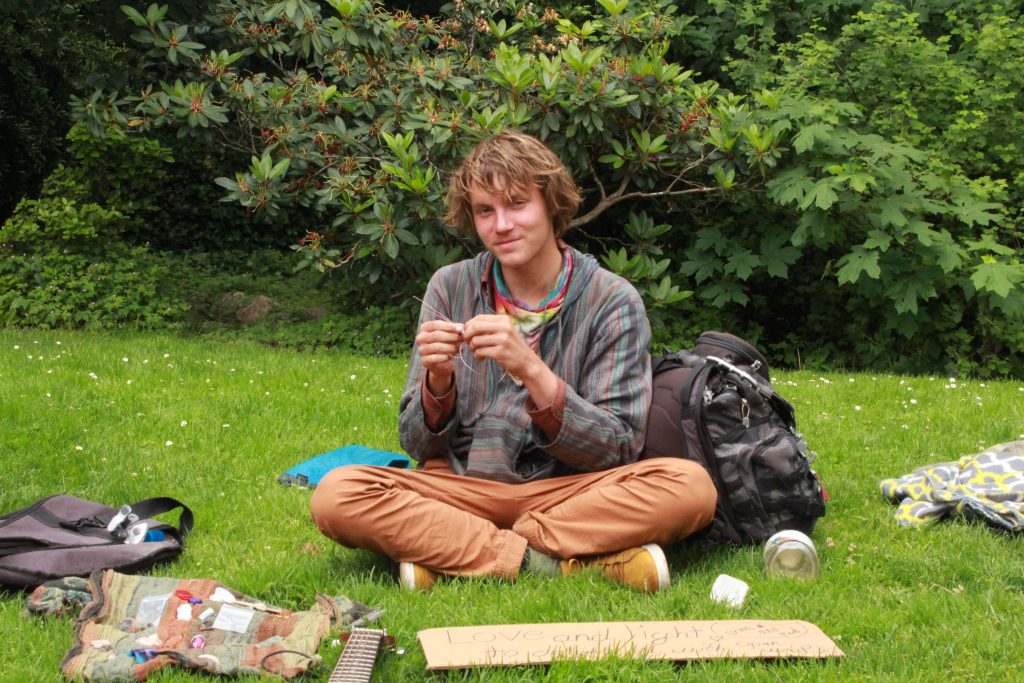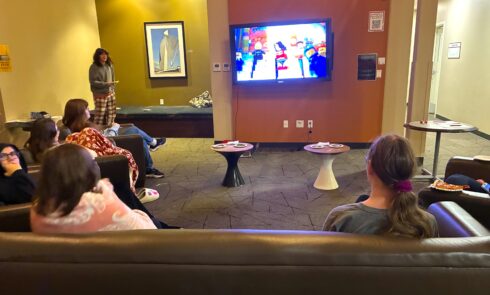
In the small town of Ashland, Oregon lies a great disparity between the wealthy and the homeless. Large mansions lurk behind the nearly hundred acre park where many homeless men and women illegally sleep throughout the year. Tourists visit Lithia park avoiding eye contact with the unkempt men and women sleeping off in the distance.
Despite the rise of programs and education plans set in place to reduce homelessness within the state, homeless numbers for children from kindergarten to twelfth grade are on the rise in Oregon for the third consecutive year, according to the McKinney-Vento Act. The McKinney-Vento act was established in 1987 as the first major legislative act passed that dedicates great financial resources to assisting the homeless. In doing so the act also provides a breakdown of statistics to help understand homelessness within youth.
The act was established to increase awareness and protection for homeless children and is facing funding issues and setbacks as the number of homeless children has not decreased, despite their funding efforts. “These programs now face new challenges as the homelessness persists unabated across the country,” according to the National Coalition for Homeless.
Under the McKinney-Vento Act the term homeless refers to any child in preschool to twelfth grade attending an Oregon public school that are living out of shelters, motels, shared housing, or on the streets, which includes living out of a car.
Based on research provided from the McKinney-Vento Act there were 3.71 percent of homeless students from kindergarten through twelfth grade in Oregon schools for the 2015 to 2016 school year. This percent translates to 21,340 students without a fixed home. Comparatively, during the height of the recession in the 2008 to 2009 school year, there was a 3.23 percent homeless rate within Oregon public schools, which translates to 18,051 students without a home.
After years of overcoming the economic crisis that plagued the United States in 2008, which resulted in ten million homes being lost to the banks and families economically ruined, the number of homeless students was still lower than it is now. The number of homeless children in our society becomes a drain on our education system, our overall economy, and our society at large.
A study conducted in April 2016 by Administration for Children and Families and Family and Youth Services Bureau at the University of Nebraska-Lincoln followed 873 homeless youth aged from fourteen to twenty one across eleven various cities and found that “the average youth spent nearly two years living on the streets. More than 60 percent were raped, beaten up, robbed, or otherwise assaulted.”
In addition to the emotional and physical trauma homeless children face, research from the McKinney-Vento Act shows that in the 2015 to 2016 school year homeless children in third or fourth grade levels scored an average of 30.3 percent for English language courses whereas non-homeless students scored an average of 55.2 percent. In math homeless students performed an average of 18 percent, non-homeless students an average of 41.5 percent. Finally, in science courses homeless students performed an average of 40.4 percent and non-homeless students performed an average of 62.5 percent. “87 percent of homeless youth drop out of school and never complete their education.” said Karen Phillips, Development Director for the Maslow Project an organization in Southern Oregon dedicated to helping homeless youth.
“When kids are homeless, they are subject to a lot of traumas that can go on to affect the rest of their lives. It’s essential that the community wrap around the kids that we serve. It’s just human decency,” said Phillips. Despite the lifelong challenges accompanied with being a child and not having a place to call home or possibly not having a parent or guardian to help them, homeless children also face issues of receiving an education that will help assist them with job opportunities in the future.
The McKinney-Vento liaison Samuel Bogdanove is responsible for identifying and assisting homeless youth and their families in public schools in Jackson County. In Ashland, Bogdanove has seen families live out of cars, children with severe mental issues living without parents, and students couchsurfing from house to house without parents to assist them. He has recently noticed an increase in students living without a parent or legal guardian. “That’s the hardest thing, seeing kids without any responsible adults.”
According to a study from the Department of Health and Human Services’ Administration for Children and Families, released in April 2016 “more than half of the homeless youth become homeless for the first time because they are asked to leave home by a parent or caregiver, and more than half say they have tried to stay at a shelter but it was full.”
A once common misconception about homelessness was that the issues of the homeless were their issues to solve on their own. However, according to Julie Akins a freelance journalist in Southern Oregon and homeless activist “two thirds of Americans don’t have any savings at all.” Meaning two thirds of Americans are one paycheck, one hospital bill, one unplanned vital expense away from becoming homeless. Homelessness affects more than just the immediate families. “When you have a large number of people that are at the very bottom of the economy it affects the rest of the economy,” said Akins. An increased number in homelessness leads to a decreased number of spending, which helps to contribute a standstill in the economy.
“It’s an economic tsunami that is sweeping the west coast and if we don’t see it and address it we’ll drown in it,” said Akins.
Studies and research suggest that greater access to affordable housing would alleviate some of the major issues of homelessness. “The best social and economic policies should be based on research and evidence, and in this case, the evidence points to the fact that if we do things differently, we not only achieve better social outcomes, but we also save money,” according to the Homeless Hub, a web based research library located in Canada.
The housing first approach to homelessness is the idea of providing the chronically homeless with permanent housing and then providing other support services as needed. The previous approach to end homelessness was to require the homeless to complete treatment, attend support services meetings or employment training in order to receive housing or housing support.
In a study conducted in 2016 by Community Solution, a non-profit social services organization, showed housing first options helped alleviate the strains and financial demands of homelessness has on society. “The vast majority of housing first tenants (85 percent on average) do not return to homelessness, remaining permanently housed at rates that often exceed those of their counterparts in traditional treatment first programs,” according to Community Support.
Research performed in Central Florida in 2014 showed that housing first cost taxpayers one third per person the amount it would cost to leave the homeless on the streets. It cost $31,065 per year in Central Florida to leave the homeless on the streets. This price is a result of hospital stays, emergency room fees, and criminal justice fees. In comparison, the housing first method of aiding the homeless cost $10,051 per person, per year.
“If the services you provide for the homeless are addiction therapy and transitional housing, obviously you’re making a mistake in the services you’re offering,” said Akins.
On her website Understanding Homelessness Akins attempts to put a face behind homelessness. In 2016 she interviewed a thirty eight year old father named Christopher, desperately trying to find work in order to keep his kids under a roof. He and his children have lived in a car in the past and as of 2016 were living in a weekly motel. Sometimes he is able to afford food and other times he runs out of money and is unable to feed his children, “We run out sometimes and the kids get hungry.”
“How hard must that be to be a child, wake up early to go to a public bathroom, shower, try to find clothes to wear, and try to go to a public school and act like everything’s okay,” said Akins. “From a personal standpoint, wrapping my brain on how it can be okay for kids to be homeless in a community is difficult.”
Behind the unkempt hair and the torn clothes lives a person that is without a place to call home or a place to sleep, that needs help. And despite strong efforts such as McKinney-Vento the problem has persisted and even increased. Given the impact on individual children, our education system, our economy, and our society at large homelessness has become a crisis that affects more than the homeless themselves. Continued efforts at adapting to the needs of the homeless based on data driven programs and economically viable solutions are necessary to address this crisis that clearly affects us all. Through hundreds of interviews up and down the west coast Akins said “I discovered that homeless people are me and I am them. I didn’t get the feeling that homeless people have vastly different experiences than my own.”



